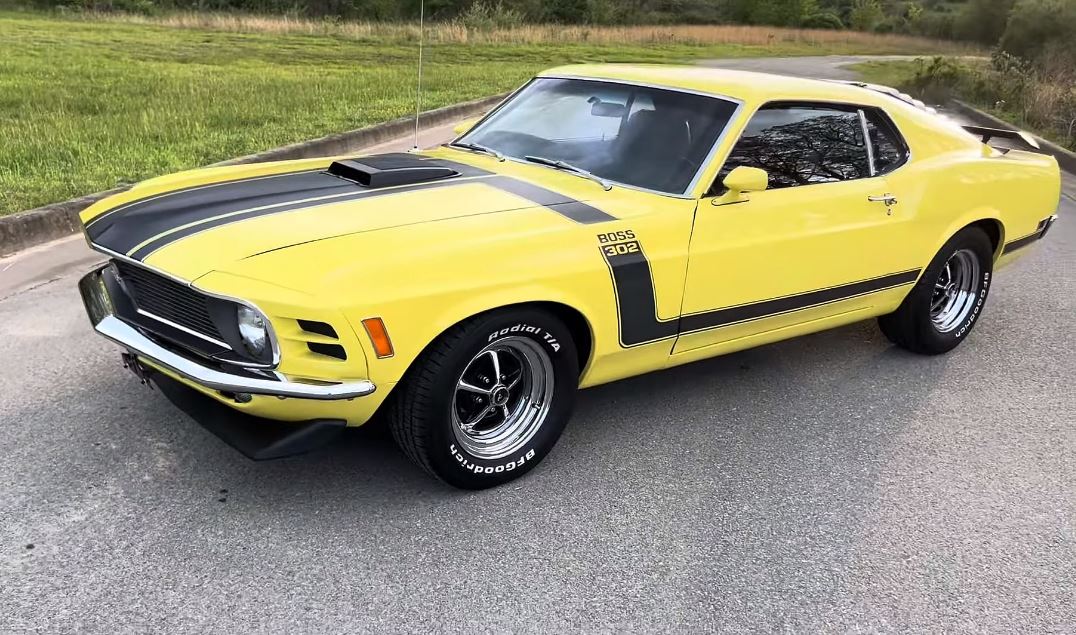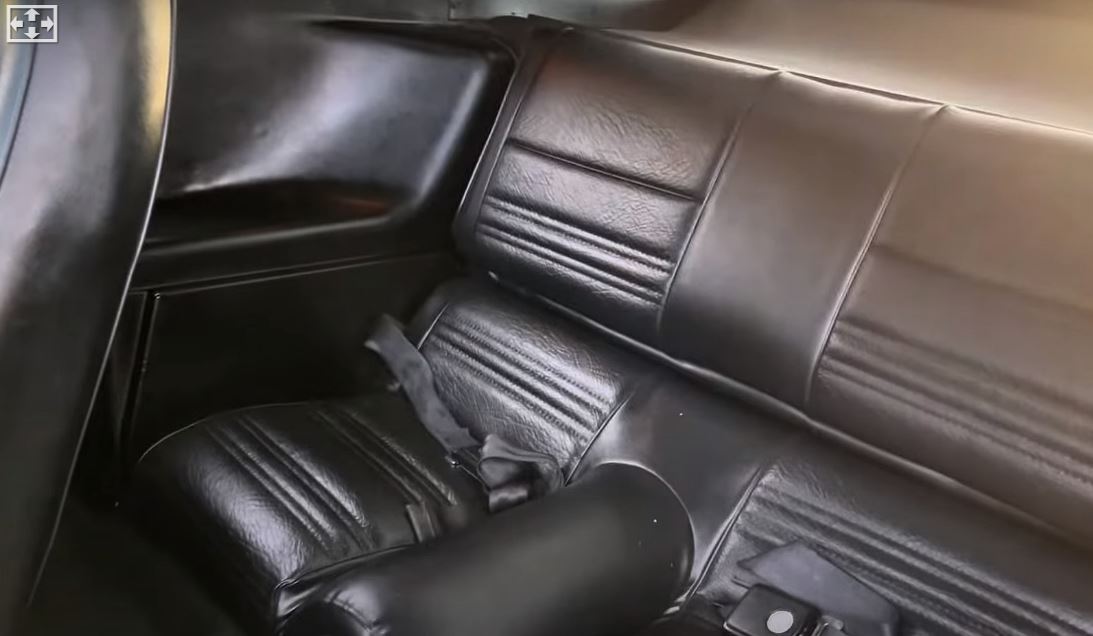Having introduced the Cobra Jet engine in mid-1968, Ford unleashed three new models for the 1969 model year. The Mach 1 arrived as a performance package, while the Boss twins debuted as limited-edition muscle cars with homologation purposes.
The Boss 429 was the meanest of the bunch. Developed to homologate the 429-cubic-inch (7.0-liter) Boss V8 engine for NASCAR (used in the championship-winning Torino Talladega), this Mustang hit showrooms with 375 horsepower on tap. At the time, it was by far the most potent iteration of the nameplate.
The Boss 302 was a different animal. Created to align the Mustang to new SCCA Trans-Am regulations, it was more of a track-ready rig with less output and not so much weight to carry around. It drew juice from a 302-cubic-inch (4.9-liter) Boss V8 lump rated at 290 horsepower.
The unit was based on the more mundane two-barrel 302 small block but featured a four-barrel carburetor setup and heads from the 351-cubic-inch (5.8-liter) Cleveland V8. A four-speed manual was the only transmission available.
Styled by Larry Shinoda, the Boss 302 Mustang had a unique aero package with a front spoiler, rear deck wing, quarter-panel air scoop delete, and rear window louvers. It also sported a bespoke striping package and an option blacked-out hood. The bundle gave Ford a factory-built competitor for the popular Chevrolet Camaro Z/28.
The Mustang failed to stop the Camaro from winning the Trans-Am series in 1969 but returned with a vengeance in 1970. With Chevrolet crippled by the departure of Roger Penske and Mark Donohue, Ford scored a comfortable win in front of American Motors (AMC).
Just like the Boss 429, the Boss 302 returned in 1970 with styling modifications. Ford sold only 1,628 units in 1969, but deliveries jumped to 7,013 examples the following year. The Bright Yellow example you see here is one of those relatively rare ponies.
Granted, the 1970 Mustang isn’t the prettiest iteration of the nameplate. I’m pretty sure most Ford gearheads would prefer the 1968 version. The 1970 Mustang’s front end looks a bit quirky due to the headlamps mounted inside the grille, but the Boss 302 goodies and the yellow/black color combo make it all better.
A nicely restored example, this 302 packs all the race-ready goodies you’d expect to find on a limited-edition Mustang. More importantly, it still relies on its numbers-matching Boss 302 engine and four-speed manual gearbox. That’s the kind of combo you want in a classic from the golden era.
All told, this yellow Mustang is not a lemon. It looks fantastic on the road and sounds great when the pedal hits the metal. Find out more about that in the video below.

